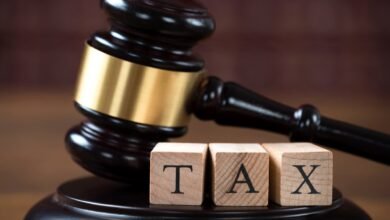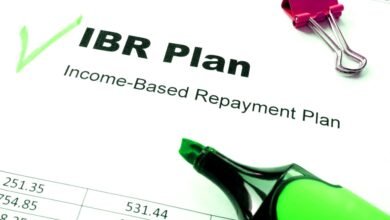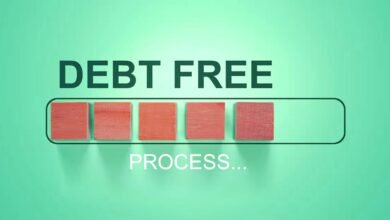The Step-by-Step Bankruptcy Process in 2023

Bankruptcy is often perceived as a last resort—a financial Hail Mary that comes with a myriad of questions and uncertainties. Understanding the step-by-step bankruptcy process is crucial for anyone considering this option or seeking clarity on the subject. In this comprehensive guide, we will unravel the complexities of bankruptcy, offering insights into its types, the filing process, and what happens afterward.
Types of Bankruptcy
-
Chapter 7: Liquidation
- In Chapter 7 bankruptcy, also known as liquidation, non-exempt assets are sold to pay off debts.
- This chapter is suitable for individuals with limited income and few assets.
-
Chapter 13: Reorganization
- Chapter 13 offers a reorganization plan, allowing individuals to keep their assets while repaying creditors over an extended period.
- Ideal for those with a regular income who can commit to a repayment plan.
-
Chapter 11: Business Bankruptcy
- Primarily designed for businesses, Chapter 11 permits restructuring and continued operation under a court-approved plan.
- It offers a chance for businesses to recover without shutting down.
Assessment of Financial Situation
Before diving into the bankruptcy process, a meticulous assessment of your financial situation is essential. This involves gathering detailed information about your income, assets, debts, and living expenses. Understanding your eligibility for bankruptcy is critical, as different chapters have distinct criteria.
Hiring a Bankruptcy Attorney
Navigating the legal intricacies of bankruptcy can be overwhelming, making the expertise of a bankruptcy attorney invaluable. Choosing the right attorney involves more than a simple Google search. Look for experience, a specialization in bankruptcy law, and a clear understanding of your unique financial situation.
Pre-filing Requirements
The journey into bankruptcy begins with credit counseling, a mandatory step designed to evaluate whether bankruptcy is truly the best option. Completing required forms and documents accurately and promptly is crucial to a smooth filing process.
Filing for Bankruptcy
Filing for bankruptcy initiates the legal process. This involves submitting paperwork detailing your financial situation and paying court fees. The moment you file, an automatic stay comes into effect, providing immediate protection from creditors. This stay prevents creditors from pursuing debt collection efforts.
Automatic Stay
The automatic stay is a powerful tool that halts creditor actions. It provides a temporary but essential reprieve, giving you the space to regroup and plan your financial future. However, certain debts, such as child support or criminal fines, are exempt from this protection.
Meeting of Creditors (341 Meeting)
Shortly after filing, you’ll attend the 341 Meeting, also known as the Meeting of Creditors. This meeting is not as intimidating as it sounds—it’s an opportunity for creditors to ask questions about your financial situation and the proposed repayment plan. The bankruptcy trustee oversees this meeting, ensuring fairness and adherence to the law.
Repayment Plans (Chapter 13)
For those opting for Chapter 13, a crucial step involves crafting a repayment plan. This plan outlines how you will repay your debts over a specified period, usually three to five years. The court must approve this plan, and regular payments are made to a trustee, who then distributes the funds to creditors.
Liquidation of Assets (Chapter 7)
Chapter 7 involves the liquidation of non-exempt assets to satisfy debts. This might sound drastic, but the goal is to give you a fresh start by discharging eligible obligations. The court-appointed trustee oversees the liquidation process.
Debt Discharge
Not all debts are dischargeable in bankruptcy. Understanding the criteria for discharge is crucial. Generally, unsecured debts like credit card balances and medical bills are dischargeable, but certain obligations, such as student loans or recent taxes, may not be eligible for discharge.
Credit Score and Rebuilding
Bankruptcies inevitably affect your credit score. However, it’s not a permanent stain. With strategic financial management, you can start rebuilding your credit over time. This involves responsible credit use, timely payments, and a commitment to sound financial practices.
Post-Bankruptcy Education
Completing financial management courses post-bankruptcy is often mandatory. These courses are designed to provide essential knowledge on budgeting, credit management, and avoiding financial pitfalls. It’s an opportunity to equip yourself with the skills needed for a financially stable future.
Common Bankruptcy Mistakes
Learning from the mistakes of others is a valuable aspect of the bankruptcy process. Common pitfalls to avoid include failing to disclose all assets, not attending required meetings, or incurring new debt shortly before filing. Awareness of these potential missteps can contribute to a smoother bankruptcy journey.
Conclusion: Bankruptcy Process
In conclusion, the bankruptcy process is a complex yet structured path to financial recovery. Understanding the nuances of each step empowers individuals to make informed decisions about their financial future. While the road may seem daunting, the ultimate goal is to provide a fresh start and a chance for a more secure financial future.
FAQs
- How long does the bankruptcy process typically take?
- The duration varies but can range from a few months to several years, depending on the type of bankruptcy and individual circumstances.
- Can I keep any assets during bankruptcy?
- The ability to retain assets depends on the type of bankruptcy filed. Chapter 13 allows for the retention of support, while Chapter 7 involves liquidation.
- Will bankruptcy ruin my credit forever?
- While bankruptcy has a significant impact on credit, it is not permanent. With responsible financial management, credit can be rebuilt over time.
- Are all debts discharged in bankruptcy?
- Not all debts are dischargeable. Debts like child support, alimony, and certain taxes may not be eligible for discharge.
- Can I file for bankruptcy without an attorney?
- While it’s technically possible, it’s highly recommended to seek legal counsel. The complexities of bankruptcy law make professional guidance invaluable.












2 Comments